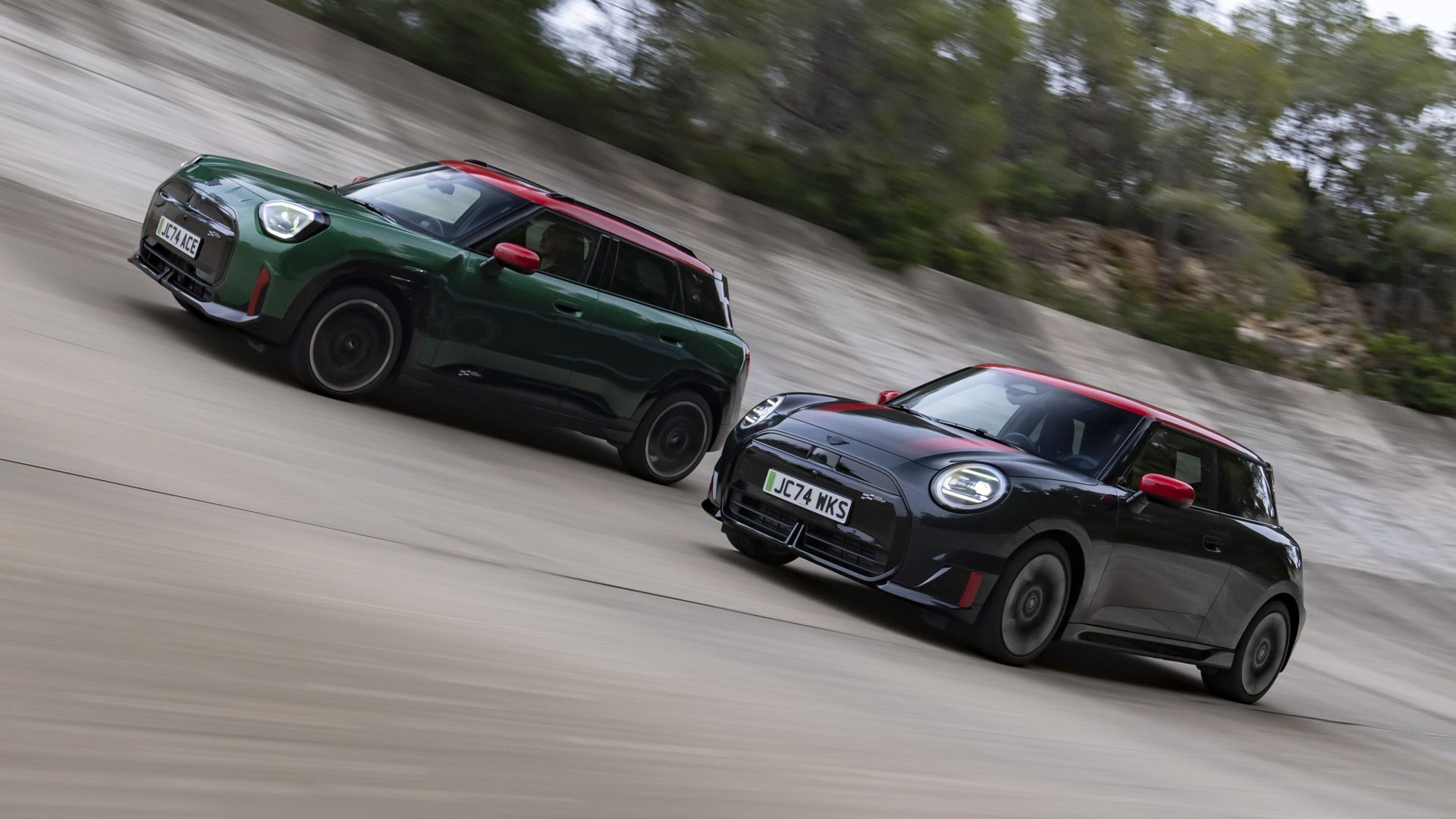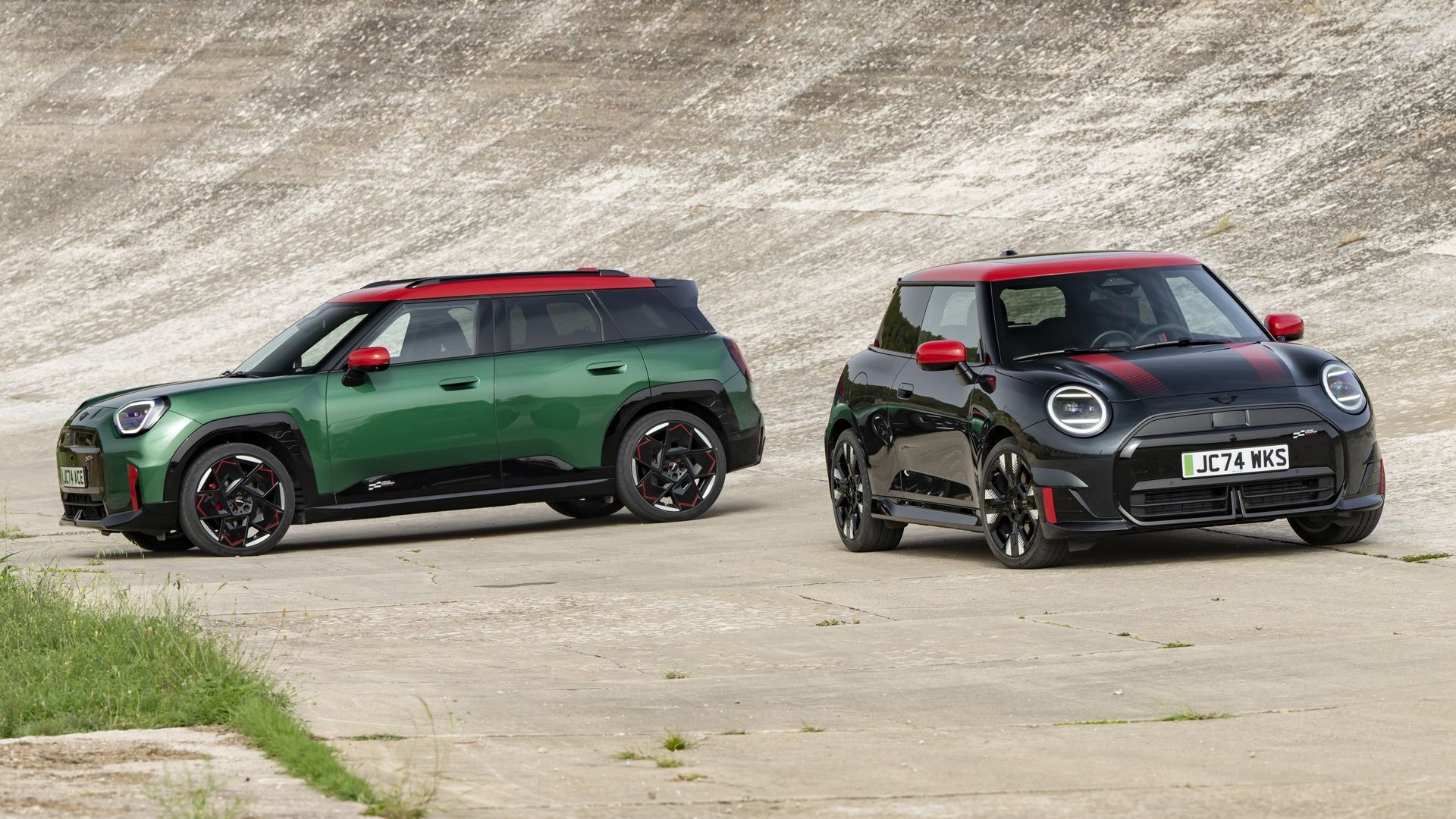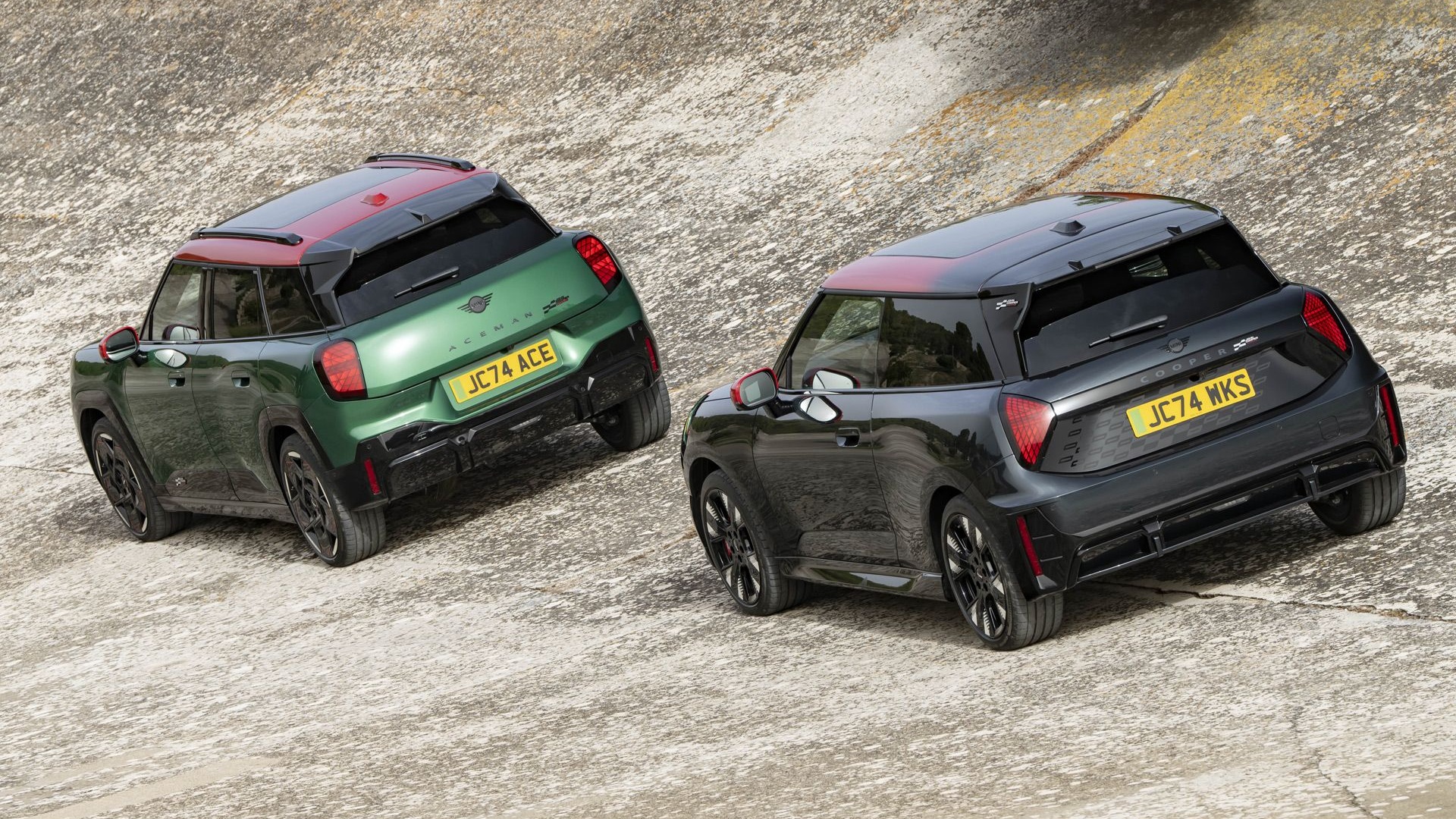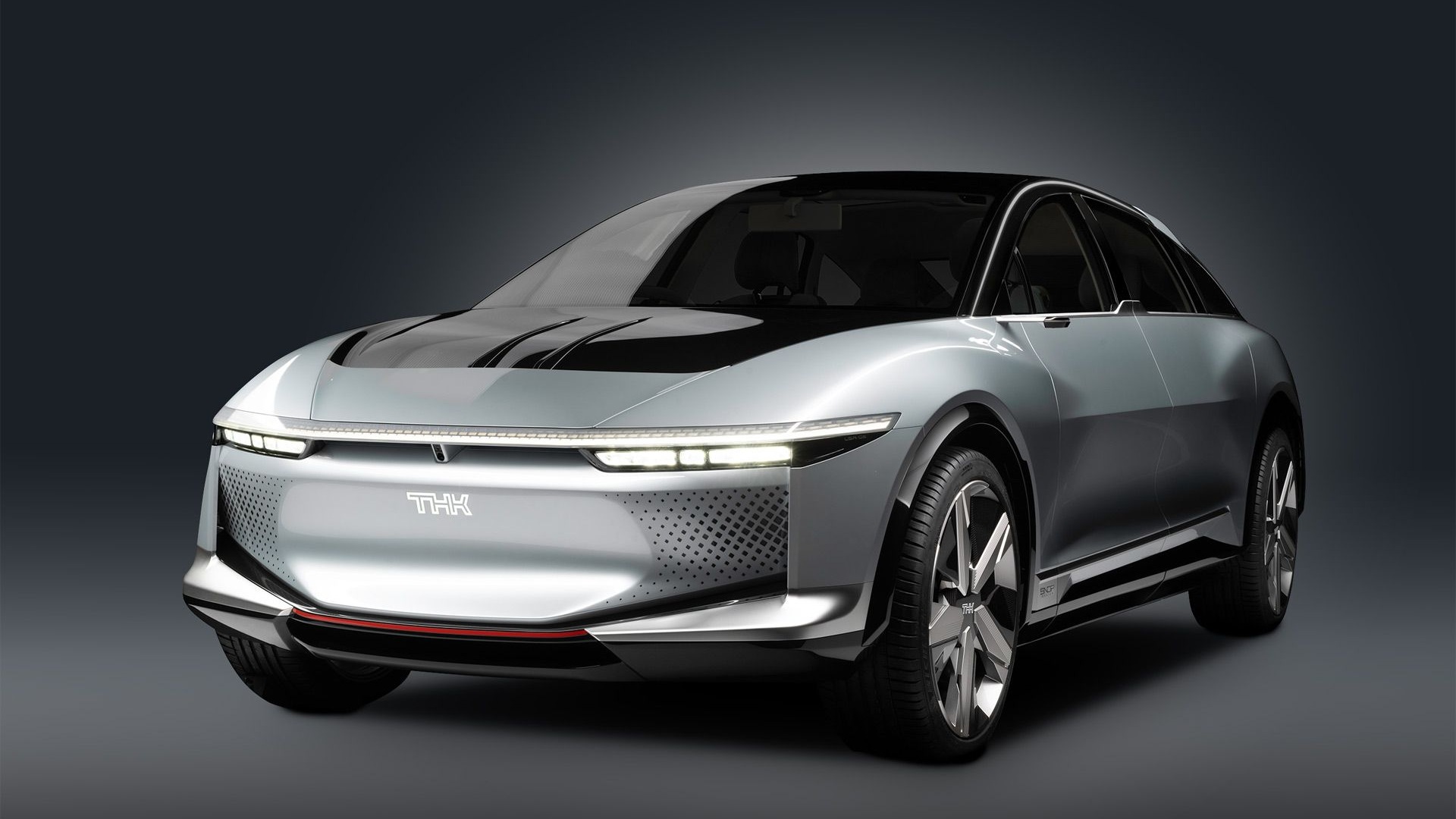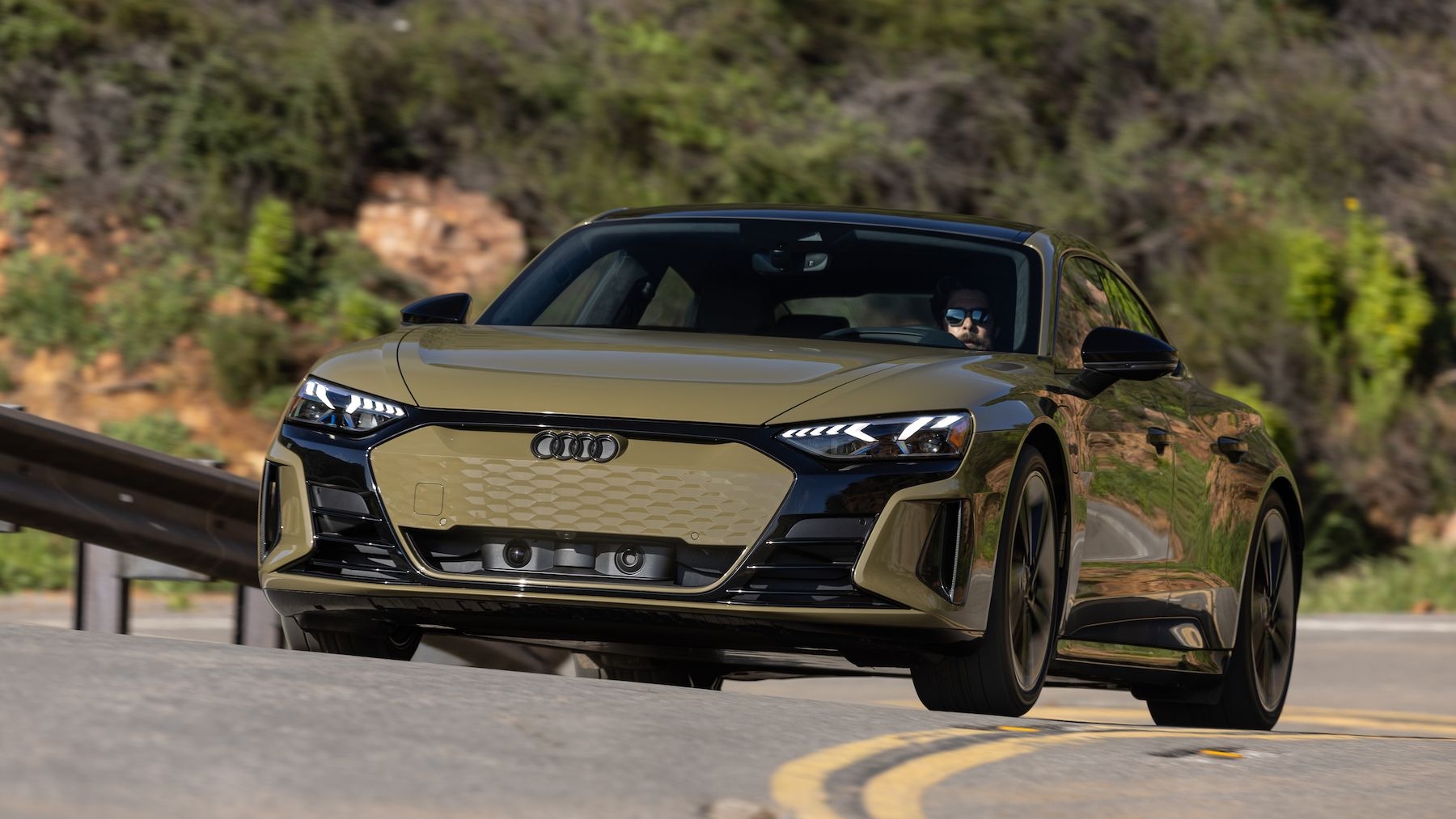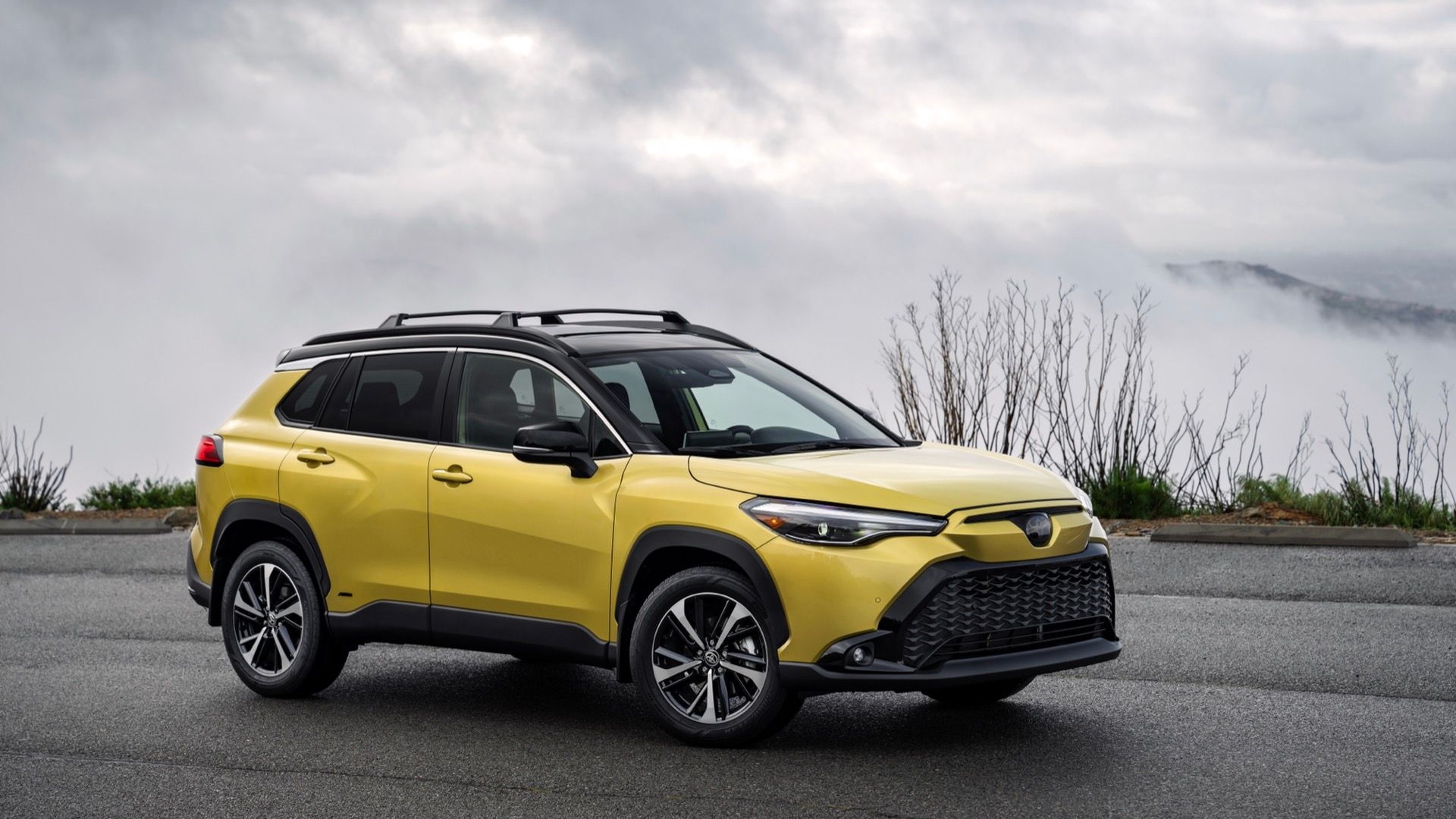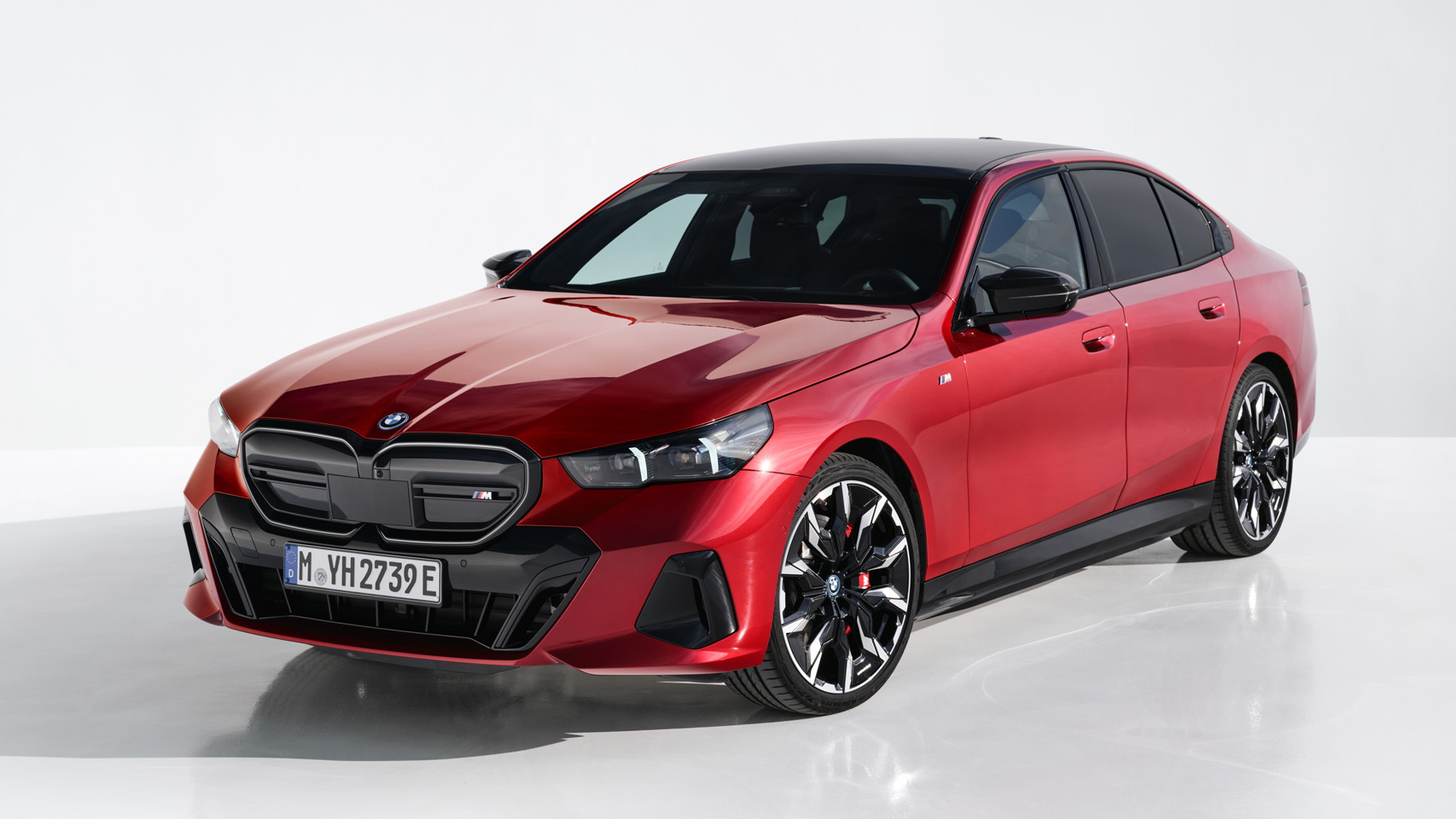Mini is applying its John Cooper Works (JCW) performance badge to electric vehicles for the first time—and on two models simultaneously.
On Monday, JCW versions of the electric Mini Cooper hatchback and the Aceman subcompact crossover made their public debut at the 2024 Paris auto show. The Cooper hatch is also sold with gasoline powertrains, while the Aceman, which roughly slots between the Cooper and Countryman, is offered exclusively as an EV. Neither electric model is currently available in the U.S.
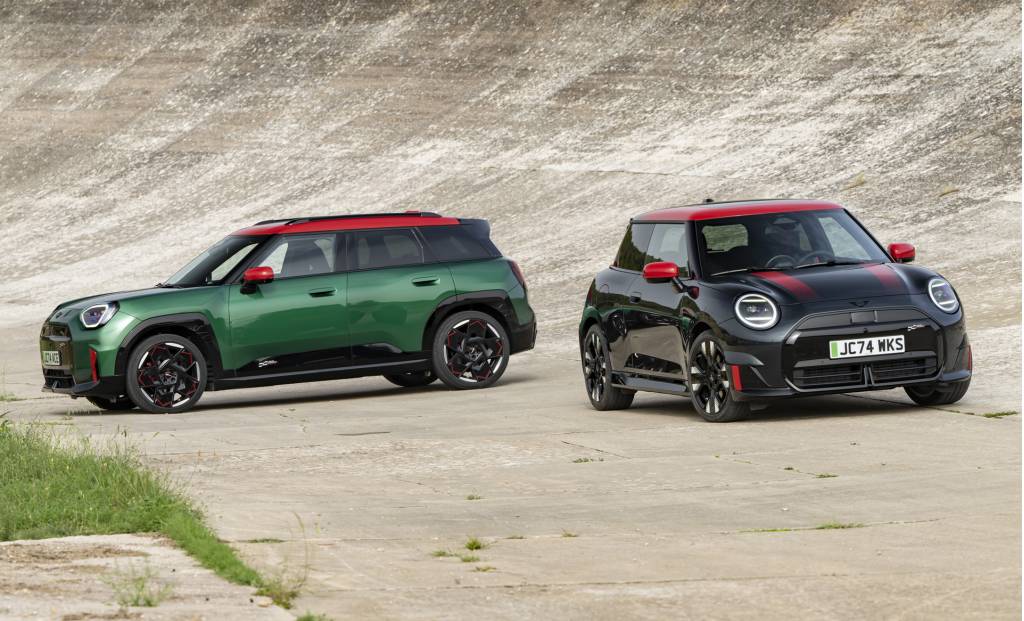
Mini John Cooper Works Cooper and Aceman EVs
Both JCW models have a 255-hp electric motor that drives the front wheels. Mini quotes a 0-62 mph time of 5.9 seconds for the JCW Cooper electric hatch and 6.4 seconds for the JCW Aceman, with models electronically limited to 124 mph. The JCW treatment also includes sport-tuned suspension, upgraded brakes, and a go-kart mode that provides a temporary power boost.
Styling changes include body kits and model-specific wheels measuring 18 inches for the JCW Cooper EV and 19 inches for the JCW Aceman. Inside, a black-and-red theme encompasses a knit surface on the dashboard, and seats with black upholstery and red accent stitching. Other JCW-specific touches include an ambient lighting package that illuminates the roof, and new graphics for the infotainment system menus.
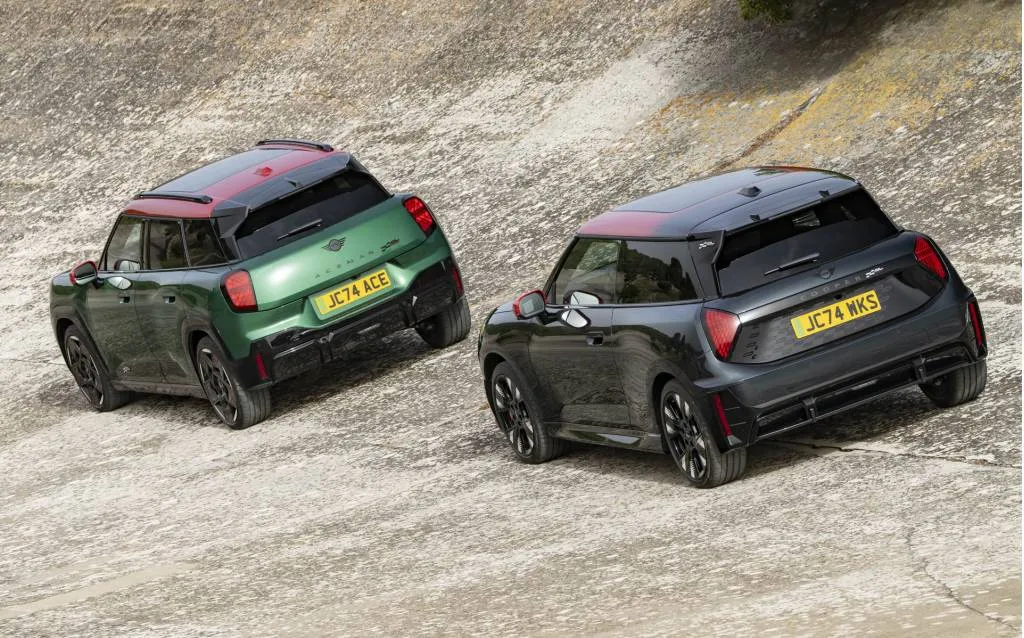
Mini John Cooper Works Cooper and Aceman EVs
The two models also share a 54.2-kwh battery pack that Mini estimates will provide 230 miles of WLTP range in the JCW Cooper and 220 miles in the JCW Aceman. Comparable U.S. EPA figures would be lower, assuming either JCW model reaches this market.
Electric Cooper and Aceman models will initially be manufactured in China, meaning they'll be subject to substantial tariffs if imported to the U.S. Mini has said it will add U.K. production of the electric Cooper in 2026, potentially allowing that model to reach the U.S. Mini has also indicated that it plans to shift to EVs entirely by the early 2030s.
